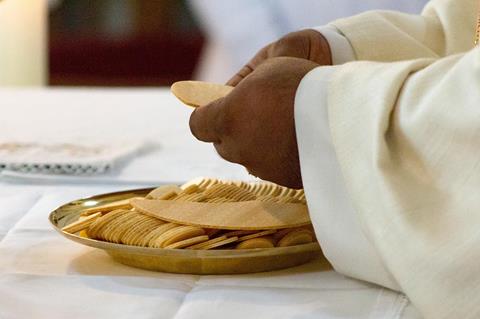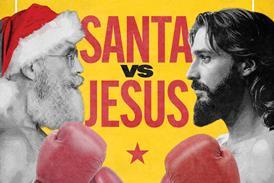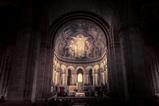Tom Wright answers a reader’s question about the Catholic practice of Eucharistic adoration

Q: Having been raised in a Puritan heritage, I’m unfamiliar with high Church practices, but wonder if I’m missing out on some of their richness. What is your view on Eucharistic Adoration?
In order to answer this question, we need to look at some history.
Puritanism arose in strong reaction to how medieval Western Roman Catholicism was doing church. The Puritans worried that the heart of religion had been reduced to external gestures, such as crossing oneself, genuflecting and bowing. These were perceived as mere rituals meant to impress God. Such an attitude, said the Puritans, has nothing to do with the genuine faith found in the New Testament.
The Puritans and other Protestant Reformers were also concerned that Catholic priests were, in effect, ‘re-sacrificing’ Jesus during every Mass. While Catholic theology did not actually claim that Christ was sacrificed anew each time, many believed that Catholics were undermining the once-for-all nature of Christ’s atoning death. Catholics, meanwhile, accused Protestants of fragmenting the unity of the crucifixion and Eucharist.
This polemical climate has shaped the instincts of many churches ever since. Some Protestants have the attitude of: Whatever the Catholics do, we’ve got to do the opposite. If Catholics had altars, Protestants would insist on tables. If Catholics knelt, Protestants would stand. Manual acts of devotion, such as making the sign of the cross, were abandoned. (Ironically, many worshippers in Protestant settings often raise their hands during praise songs – which is just as much a manual act!)
Eucharistic Adoration in the Roman Catholic sense is the worship of Christ present in the consecrated bread. The tradition of adoring the consecrated host developed alongside theological claims rooted in Thomas Aquinas’ use of Aristotelian philosophy. Aquinas distinguished between the ‘substance’ (what something truly is) and the ‘accidents’ (its outward appearance). In this view, the bread looks and tastes the same, but its inner substance has become Christ’s body.
In other words, the bread remains bread but it also has an inner reality known only to God and invisible to the human eye, and that inner reality is the reality of the body of Christ. The problem is that most ordinary Christians in the medieval period, and indeed today, did not and do not think in these Aristotelian categories. Instead, many believed a physical change had occurred. This fostered devotional practices that could easily confuse the bread itself with Christ physically, and in a way that verges on idolatry – you end up worshipping the bread.
When I kneel at the Eucharist, I am adoring Jesus, the crucified and risen Lord. I am not adoring a piece of bread. If you take the consecrated bread out of the liturgy, elevate it in a special piece of equipment and treat the object as though it were Jesus himself – then I have serious theological misgivings. People may intend to worship Jesus, but they risk mistaking the sign for the reality it points to. And while intention matters, clarity of understanding matters, too.
Should one be wary of all high Church practices? I don’t think so. Many are rich and beautiful expressions of devotion. But they must be rooted in good theology and pastoral awareness. We must also avoid the trap of assuming that different traditions are necessarily idolatrous simply because they look foreign.
My hope is that we can recover both reverence and understanding. And that we remember – whether kneeling in a cathedral or standing for worship on a remote hillside – we are all seeking to worship Jesus Christ.







































No comments yet